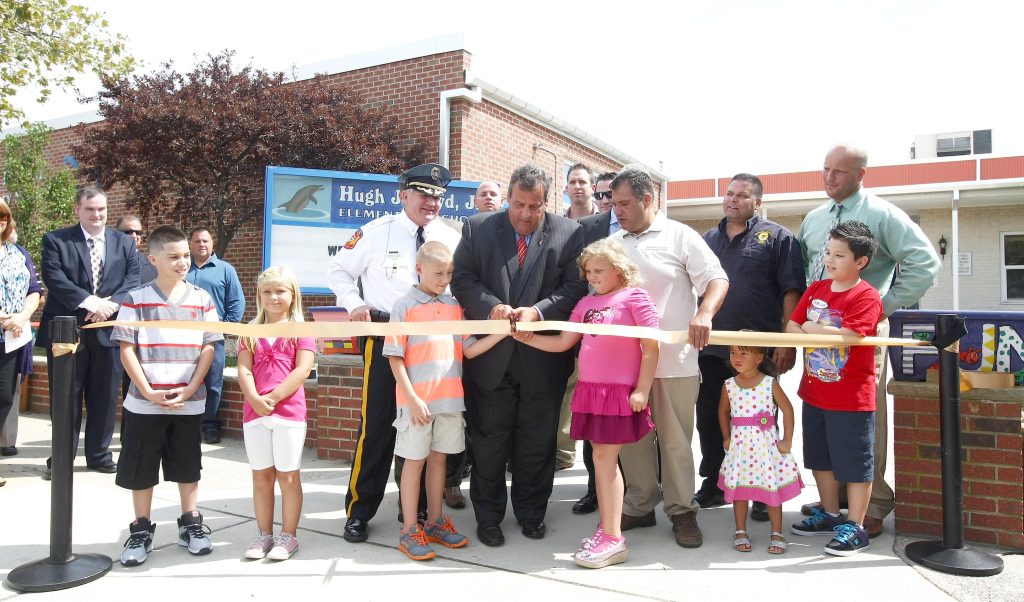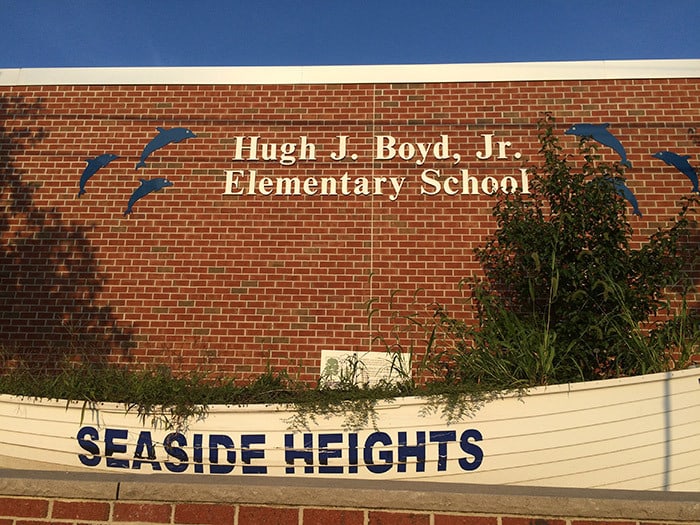The second portion of a study focusing on the potential integration of Seaside Heights into the Toms River Regional school district as a full-member municipality has been released, and will likely be presented to voters in the form of a referendum if approved by local leaders and the state.
Seaside Heights currently operates its own school district that provides pre-school to sixth grade classes at the Hugh J. Boyd Elementary School on Bay Boulevard. After being promoted from sixth grade, students move on to the Central Regional school district, based in Bayville, for middle school and high school classes.
Two options had been studied – establishing a sending-receiving relationship with the Toms River Regional school district and paying per-student tuition, or a full integration into the Toms River system under which Seaside Heights residents would be assessed TRRS school taxes under a special formula. The referendum would ask voters to choose whether to join the TRRS district as a full member; Toms River school officials were reportedly opposed to the tuition-based model.
“The timing of the referendum is going to depend on when Toms River adopts the study,” said Borough Administrator Christopher Vaz. “Their next meeting is in December, but the Commissioner of Education also has to approve it, so the soonest date would probably be March.”
The regionalization study was conducted at the behest of the state, which funded the study as part of an aid package to Seaside Heights aimed at bridging the gap between ratables lost during Superstorm Sandy and the current day. While a well-documented building boom is underway in Seaside Heights, the gap has yet to be fully closed, and Trenton officials have endorsed regionalization as a cost-saving measure.
For taxpayers, the prospect of becoming full members of TRRS may come with some concern, as increasing property values in Seaside Heights may, at some point, eclipse the average valuation in the remainder of the regional district, resulting in high per-pupil costs. Seaside Park has long lamented a similar relationship with Central Regional. In this case, however, state officials say they have developed a formula that would save taxpayer dollars instead of increasing the property tax burden.
“The initial impetus for this was our transitional aid,” said Vaz. “The state was asking us to do this, so we’ve been doing everything we can to do what we’re required to do, but the study also brought up some interesting issues. In the end it will be up to the people to vote.”
The issues brought up in the study were not purely financial in nature. Consultants hired to perform the study noted that Seaside Heights’ student population has been historically transient with a large number of students who require English language curriculum and other special services. These services, the initial study said, could be delivered with better results in the larger TRRS district with more resources and programs at its disposal.
Mary Robinson-Cohen, a former teacher and Roosevelt Public School District superintendent who is also an attorney, was one of the consultants who led the study.
“In all of the state testing, unfortunately, the children were lagging behind,” said Cohen. “There were no categories where the children were advanced-proficient and in the other categories they were minimally proficient. … The children were, mainly, below proficient.”
More on the initial report can be found in Shorebeat’s original story published late last year.
The new, 104-page report that was released last week is available online as well. This report also indicates something of an endorsement of the regionalization plan.
“We do not see any negative educational implications of the proposed new regionalization agreement,” the report, authored by consultant Steven Cea. “On the contrary, the consultants envision distinct educational advantages for both districts and no identifiable impact, much less a substantial negative impact, on Central Regional if the small number of students from Seaside Heights as phased out. The consultants recommend that a regionalization be pursued between the Seaside Heights Board of Education and the Toms River Board of Education in Grades Pre-K through 12.”
Under the plan, Seaside Heights would close its elementary district and the Boyd school, and withdraw from Central Regional. Central Regional officials would not have a say in the matter. Seaside Heights teachers would be offered positions in the Toms River Regional district.

Former Gov. Chris Christie cuts the ribbon reopening the Hugh J. Boyd Elementary School following Superstorm Sandy, Sept. 5, 2013. (Photo: Governor’s Office/ Tim Larsen)
Regionalization could be achieved in two ways, the report said: reconstituting the entire TRRS district, which would require individual referendum support from all current member municipalities, or expanding TRRS to include one additional member, which would require a single collective majority vote in all current TRRS communities as well as Seaside Heights.
The first option was not considered as it was deemed unlikely to pass and would not result in savings for each community.
Seaside Heights is projected to add an average of 294 students to Toms River Regional over an initial five-period at an average annual cost of $2.4 million. Over a ten-year period, the enrollment is projected to be 277 students at an average cost of $2.3 million. Both districts have seen declining enrollment from historic highs.
At fully-allocated funding based on property values, Seaside Heights residents would see a property tax increase as a result of regionalization, the study found, however a current state policies allow for a phased implementation that would create savings for a decade before culminating in the fully-allocated formula.
Seaside Heights “would experience an average annual tax increase of $239,000 over the five-year period by joining Toms River Regional as a regional member,” the report said. “Over a ten-year period, unless modified, Seaside Heights would see an average annual tax increase of $337,000.”
The four other communities served by TRRS would all see a tax levy decrease in an unmodified allocation. But the opposite is true if the allocation were to be modified to phase in the program, or if Seaside Heights were to join TRRS in a tuition-based relationship, which has been rejected by TRRS and would be unlikely to pass muster with voters, the consultants found.
“Under a previous analysis using a sending-receiving model, Seaside Heights saw potential savings of more than $2 million,” the report stated. “Indeed, an allocation using 100 percent per pupil would yield similar savings. However, as noted, changing the allocation method to use enrollment will cause a tax increase among a majority of the current regional members. In other words, changing the allocation mix to create tax savings for Seaside Heights will generate tax increases for many of the other regional members.”
“Under the current regional allocation using 100 percent equalized value, Seaside Heights contributes more than $4 million above what is needed to educate its students in Toms River Regional,” the report noted.
If a phased approach were to be implemented, Seaside Heights has stipulated savings of $1.2 million for the first five years, which will be reduced by $200,000 each year until exhausted. The total tax reduction in the first year for the current regional members totals $2 million, or about 1.1 percent of each member’s current tax levy. The savings for the original member communities triple over the ten-year period.
The report states that without modification, the five-year impact for homes assessed at $300,000 in Seaside Heights would see a tax increase of $109. With the modification, during the first five years, a home in Seaside Heights assessed at $300,000 would see a tax reduction of about $544. Ultimately over the long term, however, Seaside Heights residents would see a tax increase despite overall savings in educating its students.
Still, the consultants indicated an endorsement of the plan.
“In short, the educational and net financial benefits of a K-12 regional school district that includes the current constituents of Toms River Regional and adds Seaside Heights are considerable,” they said. “The consultants recommend that both Boards consider pursuing this opportunity with the Department of Education in order to submit the regionalization option to the voters in each of their respective communities.”
Vaz said a plan will be developed with input from the consultants, district officials on each side of Barnegat Bay, and representatives from the state Department of Transportation, which will be presented to voters in all of the TRRS communities and Seaside Heights.
If the referendum fails, the status quo – keeping the Boyd school open and sending students to Central Regional for grades 7-12 would continue.
“If the vote is ‘no,’ then it stays the way it is,” said Vaz.


Police, Fire & Courts
South Toms River Man Charged in Violent Murder of Wife

Police, Fire & Courts
Toms River Man Sentenced to Prison for Assault, Eluding, Robbery, Threats







